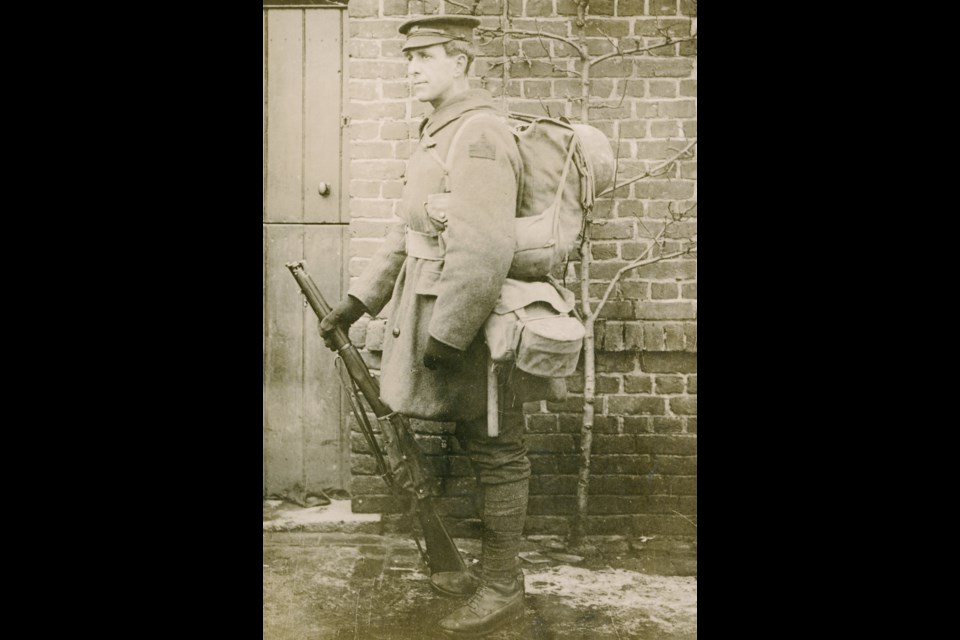The Bowen Island Museum and Archives has opened a new Remembrance Exhibit.
Remembrance Day offers us a moment to remember and reflect as a community on the people who came before us and fought for peace. We take this chance to acknowledge the stories of Bowen veterans, survivors, and neighbours who were impacted by war.
Exploring various forms of communication, the special Remembrance Day exhibit features the journey of Samuel Mack Eastman in World War I and beyond. He was one of the earliest residents of Mt. Gardner and was among the Bowen Islanders to participate in WWI.
Mack, who was the first history dean at UBC, enrolled in 1916 to go fight on the front lines in France. While he still stood to promote peace and international understanding, he recognized that the war was inevitable and felt that Canadian military efforts should be supported. Excerpts from letters written by Mack Eastman to his parents and his sister Katie Eastman illustrate the daily life and concerns of soldiers on the front lines.
In August of 1914, Mack sent a letter to enlist in the military but he was denied because of a stomach ulcer. In May of 1916, he was operated on in the Vancouver General Hospital and recovered at the Do Drop Inn on Bowen Island. Then in the spring of 1917, he raised a volunteer platoon of 50 men to reinforce the 196th Western Universities Battalion as a sergeant.
From the front lines in France, Mack writes: “Chocolate bars (pure chocolate) would be the best thing to send. Lump sugar is too bulky to be entirely worthwhile, while butter & fruits spoil on route. Chocolate will soon be almost non-procurable here. Coffee, maple sugar & other candy would be the best Xmas-box.”
A letter addressed to his mother about the reality of life in the trenches reads as follows: ”I was quite comfortable, although in the front lines we have no blankets. Indeed, my tunic and overcoat finned end to end are my only bedding.”
After the historically important Battle of Amiens, August 11, 1918, Mack lectured about current and historical issues in military camps around Europe before returning to Bowen Island. He was in possession of, and made sure to properly preserve, a secret map of the Battle of Amiens.
The military map, clearly labeled as ‘secret’ shows the front lines and the planned times of offenses. It is unknown to us how Mack acquired this valuable map, why he was allowed to keep it, and how he preserved it for so long. As a historian himself, we can imagine he saw its historical significance and endeavored to preserve it. This map is featured in the exhibit.
Mack went on to work for the League of Nations, promoting international cooperation until the start of World War II, when he was forced to escape Europe. A detailed transcription of his narrow escape is included in the exhibit. Mack maintained his connection to Bowen Island for the rest of his life and passed on his love for its natural environment to the following three generations of the Eastman/McNeill family.
The story of Mack Eastman ties into the legacy of Bowen Island and of Canadian veterans in WWI. Through this exhibit, we acknowledge the impact of war on all the people directly involved, the larger community, as well as the following generations who can feel its continuing impact on the world. On this day, we remember all the lives that were lost, the sacrifices that were made, and the lessons we have learned from past events.
Join us at the Museum and Archives on November 11 after the Remembrance Day ceremony at the Cenotaph (beginning after the 10:50 am ferry departs Bowen), or on your way to the Legion, to reflect on Remembrance Day through the stories of Bowen Islanders in the war.



